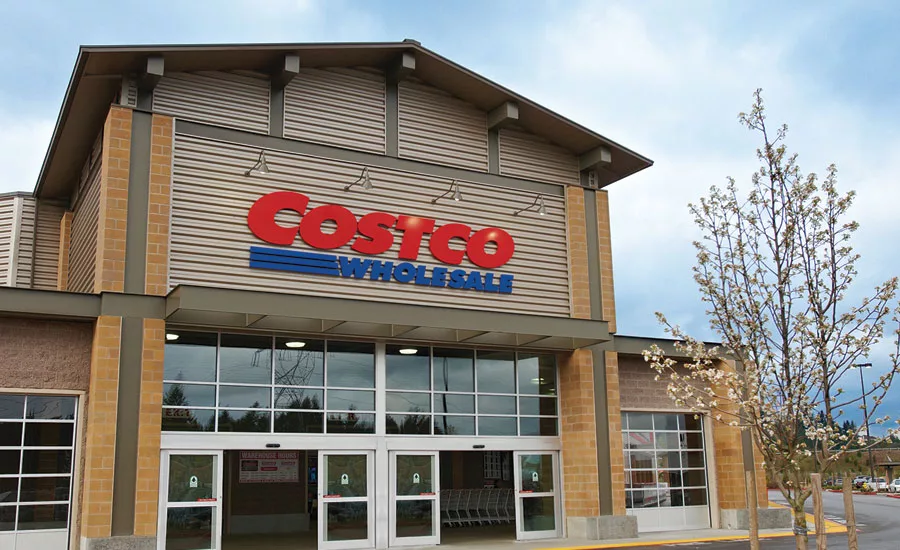Ecommerce affecting profitability of club stores
Club stores offer online grocery incentives, free shipping

Consumers and small business owners frequent club stores like Costco, Sam’s Club and BJ’s, which had an estimated $158.4 billion in sales in 2017, according to Mintel. (Image courtesy of Costco Wholesale)
The combined sales of the Top 3 club stores — Costco, Sam’s Club and BJ’s Wholesale Club — reached an estimated $158.4 billion in 2017, up 2.9 percent over 2016, according to Chicago-based Mintel’s June 2017 report “Warehouse Clubs US.” Yet, shrinking households no longer needing to purchase bulk items, eCommerce profitability and the cost of membership fees are barriers to the success of club stores.
Membership requirements also do not prevent warehouse clubs from outside competition. However, Mintel’s report notes that warehouse clubs nonetheless have been able to stand out from other retailers and online rivals.
“It can be argued that club stores have been somewhat protected by outside competition including online rivals,” the report states. “However, the landscape is changing and other companies are set to threaten warehouse clubs’ territory that may be particularly vulnerable when it comes to eCommerce, an area they have collectively not been prioritizing mainly because of the high cost of shipping bulk-sized items.”
Yet, the channel is maintaining stable growth as a result of rising corporate profit and per capita disposable income, states Los Angeles, Calif.-based IBISWorld in its December 2017 report titled “Warehouse Clubs & Supercenters in the US.” Between 2012 and 2017, warehouse clubs and supercenters revenue is expected to increase at an annualized rate of 0.8 percent totaling $456.8 billion, the market research firm states. In 2017, revenue is expected to increase 1.2 percent, in line with a 2.2 percent bump in per capita disposable income, it adds.
The changing landscape brought on by eCommerce along with millennials and younger consumers no longer shopping at brick-and-mortar stores has forced bankruptcy to such stalwart retailers as Carson’s and Toys R Us, while many Sears and K-Mart stores also have shut doors at several locations.
Club stores are not immune to changes in the retail landscape. In January, Bentonville, Ark.-based Walmart Stores Inc., the parent company of Sam’s Club, announced that it would be closing 63 of its underperforming Sam’s Clubs stores at various locations across the country. This also presented a blow to small business owners who receive discounts, for an annual fee, on a range of supplies, from coffee and cleaning supplies to food and beverages, and paper products.
Businesses, primarily smaller ones, account for 41.1 percent of industry revenue, states the IBISWord report. When it comes to product sales, food and beverages account for 40.8 percent of sales, followed by home and appliances (25.7 percent), health, beauty and wellness (17.6 percent), fuel and other (9.9 percent) and apparel and accessories (6.0 percent).
The eCommerce game
While club stores have been late to the eCommerce game, they are rapidly catching up, according to market research analysts.
While shipping of bulk and big-ticket items like television sets presents challenges for club stores, many are offering new online grocery incentives to grow sales. For example, in August 2017, Issaquah, Wash.-based Costco launched CostCoGrocery, an online grocery delivery service providing members with two-day delivery on dry grocery items. The club store also has expanded fresh food delivery in partnership with Instacart, the company says.
Since February, Sam’s Club has been offering its “Plus” members free shipping on all online orders. BJ’s Wholesale Club, Westborough, Mass., has updated its website with a buy online, pick up in-store (BOPIS) feature. Orders will be available at all 215 clubs within as little as two hours of making an online purchase, the website states. Additionally, add-to-card coupons, which were previously only available for in-store use, will now be applied to orders on the company’s website. Members can select coupons on the site and have them automatically applied at checkout.
“Whilst this new emphasis on eCcommerce will help retailers to grow their sales, this will come at the expense of store-based sales,” according to Euromonitor International’s March report “Warehouse Clubs in the US.”
As the average household size in the U.S. continues to shrink, it could present a potential obstacle for the warehouse clubs model. “Whilst smaller households can save on non-perishable items such as toilet paper or dental floss, these consumers are unable to obtain value from the foods offered at warehouse clubs, given the difficulty of consuming them before the expiration date,” the Euromonitor report states. “As a result, smaller households may be more likely to invest in Amazon Prime than warehouse club membership.”
Despite the challenges and going forward, warehouse clubs sales will reach $186.3 billion by 2022, a gain of 18 percent over this year, it states.
IBISWorld’s “Warehouse Clubs & Supercenters in the US” report also predicts growth. “Over the five years to 2022, revenue is projected to increase at an annualized rate of 0.3 percent to $464.8 billion,” it states. “Increasing online competition, however, will pose a threat to the industry, as operators like Amazon increase their customer base. Despite this threat, IBISWorld expects that establishment and enterprise numbers will continue to grow, as consumer demand for the industry remains high.” BI
Looking for a reprint of this article?
From high-res PDFs to custom plaques, order your copy today!




